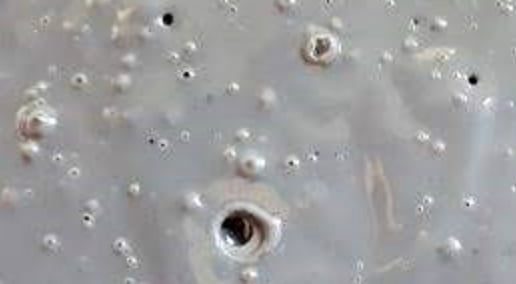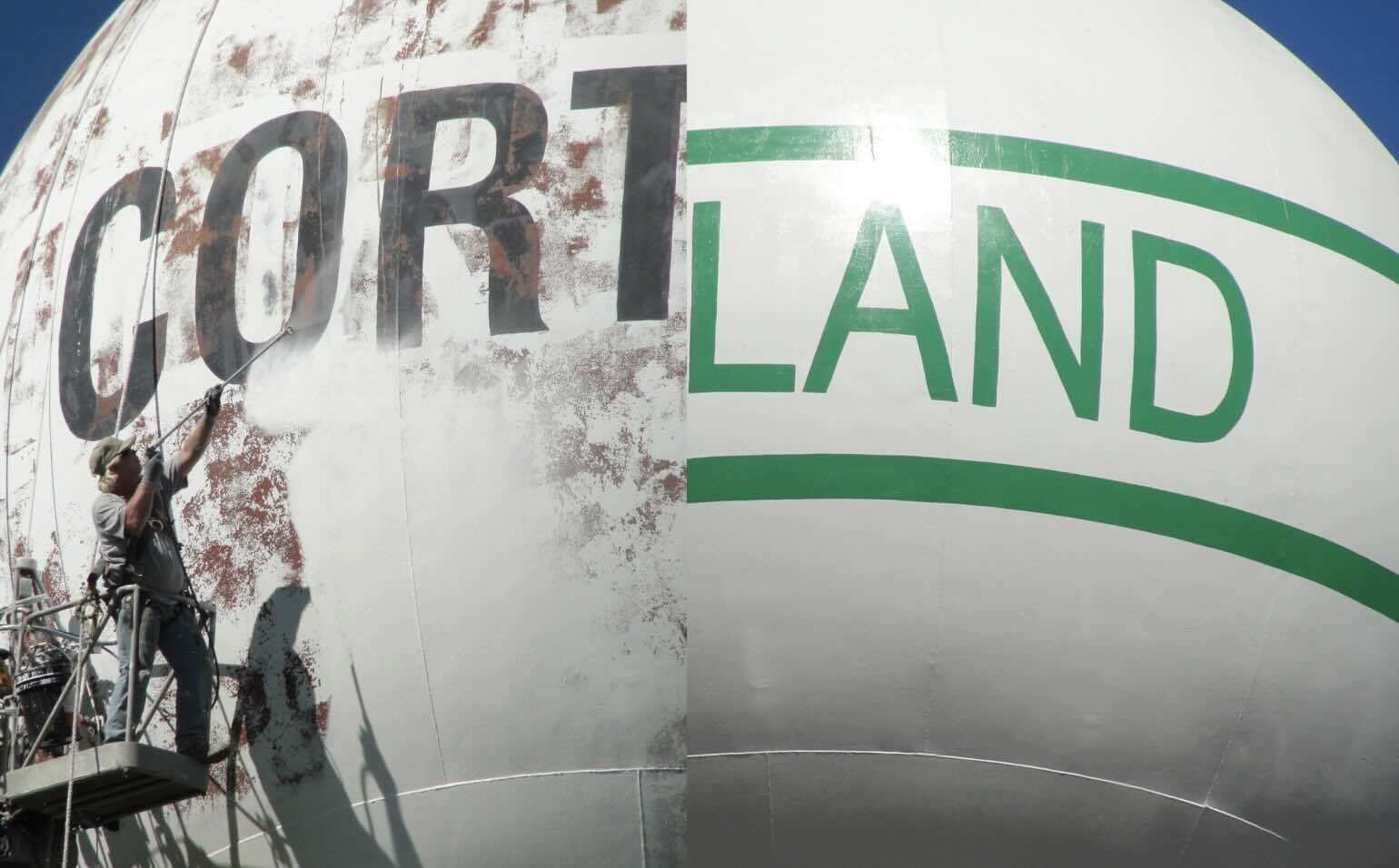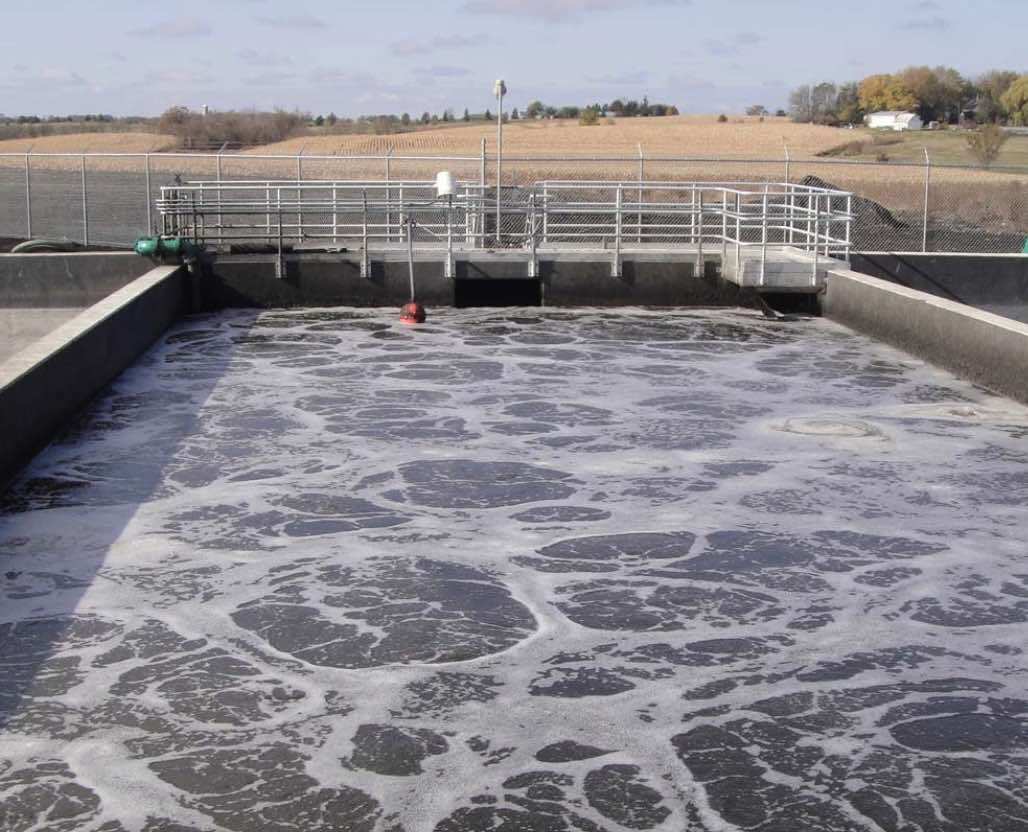
What is Outgassing and How Is It Prevented
When temperatures increase, the air inside these voids or pores expand resulting in a phenomenon called “outgassing.”
- High Performance Coatings
Outgassing can be one of the most frustrating challenges in the coating industry.
What is outgassing and how is it prevented?
Picture this: You've just finished applying a beautiful epoxy coating to a concrete floor. The job looks perfect—until the next morning when you discover tiny pinholes scattered across sections that were in direct sunlight. Sound familiar? You've just encountered concrete outgassing, one of the most frustrating challenges in the coating industry.
Whether you're battling seasonal temperature swings or working in consistently hot climates, understanding outgassing is crucial for any coating professional. Let's dive deep into this phenomenon and explore proven strategies to prevent it.
The Telltale Signs: Recognizing Outgassing Damage
When inspecting a cured coating, outgassing reveals itself through several unmistakable symptoms:
- Scattered pinholes across the surface, often concentrated in sun-exposed areas
- Cured bubbles or lumps that create an uneven finish
- Crater-like impressions or reverse craters that look like bumps
These defects rarely appear across entire projects. Instead, they typically show up in isolated sections—particularly where concrete has been exposed to direct sunlight or aggressive surface preparation.
Understanding the Enemy: What Is Concrete Outgassing?
Concrete outgassing is the slow escape of low-pressure air and vapor from concrete slabs while coatings cure above them. Think of concrete as a complex sponge filled with interconnected voids, capillaries, microscopic air pockets, and stress cracks. This network constantly interacts with environmental conditions, causing air and moisture to migrate in and out.
This dynamic behavior is actually beneficial for concrete's durability—entrained air provides freeze-thaw resistance and allows for thermal expansion. However, when barrier coatings are applied over this "breathing" surface, problems arise.
The Physics Behind the Problem
The science is straightforward: air expands when heated. As temperatures rise, trapped air in concrete seeks escape routes through the porous network. When this expanding air encounters a fresh, non-breathable coating, it creates pressure that results in pinholes, bubbles, or craters.
Several factors amplify this effect:
Temperature gradients drive air from cooler concrete toward warmer surfaces above. Exothermic coating reactionsgenerate additional heat, especially with thick applications. Barometric pressure changes create a push-pull effect that forces air in and out of concrete. Surface preparation opens more pathways for air escape.
High-Risk Conditions: When Outgassing Strikes
Understanding when outgassing is most likely helps you plan accordingly. Watch for these red flags:
Substrate Factors
- High air content concrete with excessive void ratios
- Newly poured concrete still expelling original entrained air
- Freshly blasted surfaces with opened pores and bug holes
- Contaminated concrete undergoing chemical reactions
Environmental Triggers
- Direct sunlight exposure creating rapid air expansion
- Rising temperatures throughout the day
- Barometric pressure fluctuations from weather fronts
- Continuous airflow over porous surfaces
Application Challenges
- 100% solids or high-build coatings that resist air penetration
- Thick coating applications generating excessive exothermic heat
- Heated spray applications compounding temperature effects
Battle-Tested Prevention Strategies
Successfully preventing outgassing requires a multi-pronged approach. Here are the industry's most effective methods, ranked by impact:
1. Master Environmental Timing
Temperature management is your most powerful tool. Monitor substrate temperatures against overhead air temperatures. The goal is to achieve equilibrium or, better yet, reverse the temperature gradient.
Best practice: Apply coatings during late afternoon or evening hours when slab temperatures equal or exceed air temperatures. This reverses airflow, often causing coatings to be "sucked" into pores for superior bond strength.
Sun avoidance: Direct sunlight supercharges air expansion, creating the most aggressive outgassing. Use shade structures when possible, or schedule work to avoid peak sun exposure.
2. Deploy High-Density Resurfacers
When project specifications allow, semi-breathable, high-density mortars like Epoxytec's Mortartec Series provide superior outgassing control compared to simple priming.
These thick barrier materials absorb and capture expanding vapor while preventing surface breakthrough. The principle:suffocate the vapor with mortar. Polymer-rich, high-density formulations like Mortartec Ceramico work best, as their thick gelling properties make it difficult for outgassing to reach the surface.
3. Perfect the Layering Technique
Layering offers dual benefits: temperature control and progressive pore sealing. Start with a thin "tack coat" that creates minimal exothermic heat while penetrating and gelling in surface pores.
The process:
- Apply an intentionally thin first coat
- Allow time for semi-curing and gelification
- Apply subsequent layers progressively
- Each layer plugs remaining outlier pinholes
This method requires patience but dramatically reduces outgassing issues, especially with high-build systems like the Epoxytec CPP Series.
4. Strategic Primer Application
While widely known, penetrating primers have limitations. Low-viscosity primers like Epoxytec SE Primecoat can seal low-pressure pores but may struggle with high-pressure vapor channels from direct heat expansion.
Success factors:
- Use multiple primer coats when necessary
- Allow proper cure times between applications
- Back-roll to collapse pinholes in the primer itself
- Consider recoat windows and solvent entrainment issues
5. Monitor Atmospheric Conditions
Barometric pressure changes can trigger outgassing even under otherwise ideal conditions. Summer weather patterns and approaching weather fronts create particularly challenging scenarios.
Strategy: When possible, delay applications during periods of atmospheric instability. Monitor weather forecasts and plan accordingly.
The Holistic Approach: Combining Methods for Maximum Success
No single prevention method guarantees success against aggressive outgassing. The most effective approach combines multiple strategies:
Pre-Application Planning
- Monitor substrate temperature trends throughout the day
- Check weather forecasts for barometric pressure changes
- Plan application timing for optimal environmental conditions
- Prepare appropriate materials based on outgassing risk assessment
Application Strategy
- Avoid harmful conditions (weather fronts, direct sun, extreme temperature gradients)
- Apply high-density resurfacers when specifications and budget allow
- Use layering techniques with proper gel times between coats
- Deploy primers strategically as a supplementary measure
Quality Control
- Test sections first when conditions are questionable
- Monitor coating behavior during application
- Have repair materials ready for immediate pinhole treatment
- Document environmental conditions for future reference
Troubleshooting Stubborn Cases
When standard prevention methods aren't enough, consider these advanced techniques:
Manual pinhole filling: With thick systems like Epoxytec CPP trowel-grade, hand-apply material directly over challenging outgassing pinholes between coats.
Epoxy stick plugging: For persistent large pinholes, products like MCOR's InstaFIX Epoxy Stick provide targeted repair solutions.
Extended gel monitoring: Allow extra time for initial coats to achieve semi-solid consistency before proceeding with build coats.
The Bottom Line: Knowledge Equals Success
Outgassing doesn't have to derail your coating projects. Success comes from understanding the underlying physics, recognizing risk factors, and implementing appropriate prevention strategies.
The key is observation and adaptation. Every concrete slab behaves differently, and environmental conditions constantly change. By mastering these fundamentals and maintaining flexibility in your approach, you'll consistently deliver high-quality results even under challenging conditions.
Remember: preventing outgassing is always more cost-effective than repairing pinholed coatings after the fact. Invest time in proper planning and application techniques, and you'll save both money and reputation in the long run.
Note: While surface densification techniques exist, they typically conflict with coating adhesion requirements. Most coatings perform better with mechanically profiled surfaces that optimize resin penetration, making surface preparation a necessary trade-off despite its potential to trigger outgassing.
LET OUR KNOWLEDGE AND EXPERTISE HELP ENSURE YOUR NEXT PROJECT IS SUCCESSFUL
Check out these other resources:
Secondary Containment Coatings- What you need to know
Forklift Traffic on Warehouse Floors
Moisture Vapor Transmission Protection for Concrete Floors
Spalling Concrete and How to Fix It
Don't miss these flooring project profiles:
Secondary Containment Systems in the Southwest

Overcoating Versus Complete Removal: Making the...
When faced with aging paint systems on steel...

Surface Prep and Coating Systems for Equalization...
What are Equalization Tanks and why are they used...

The Use of Crystalline Waterproofing Additives in...
The Use of Crystalline Waterproofing Additives...